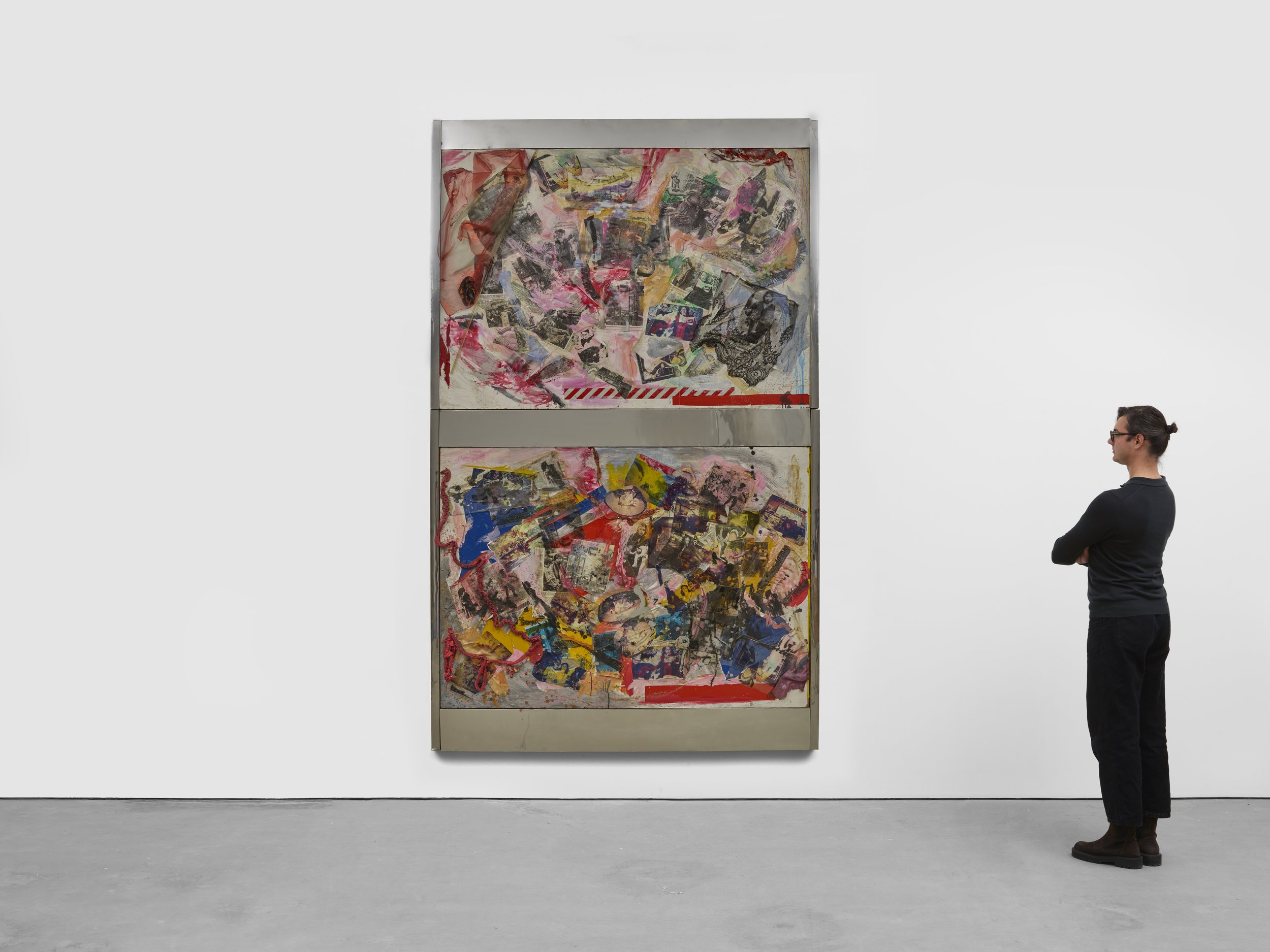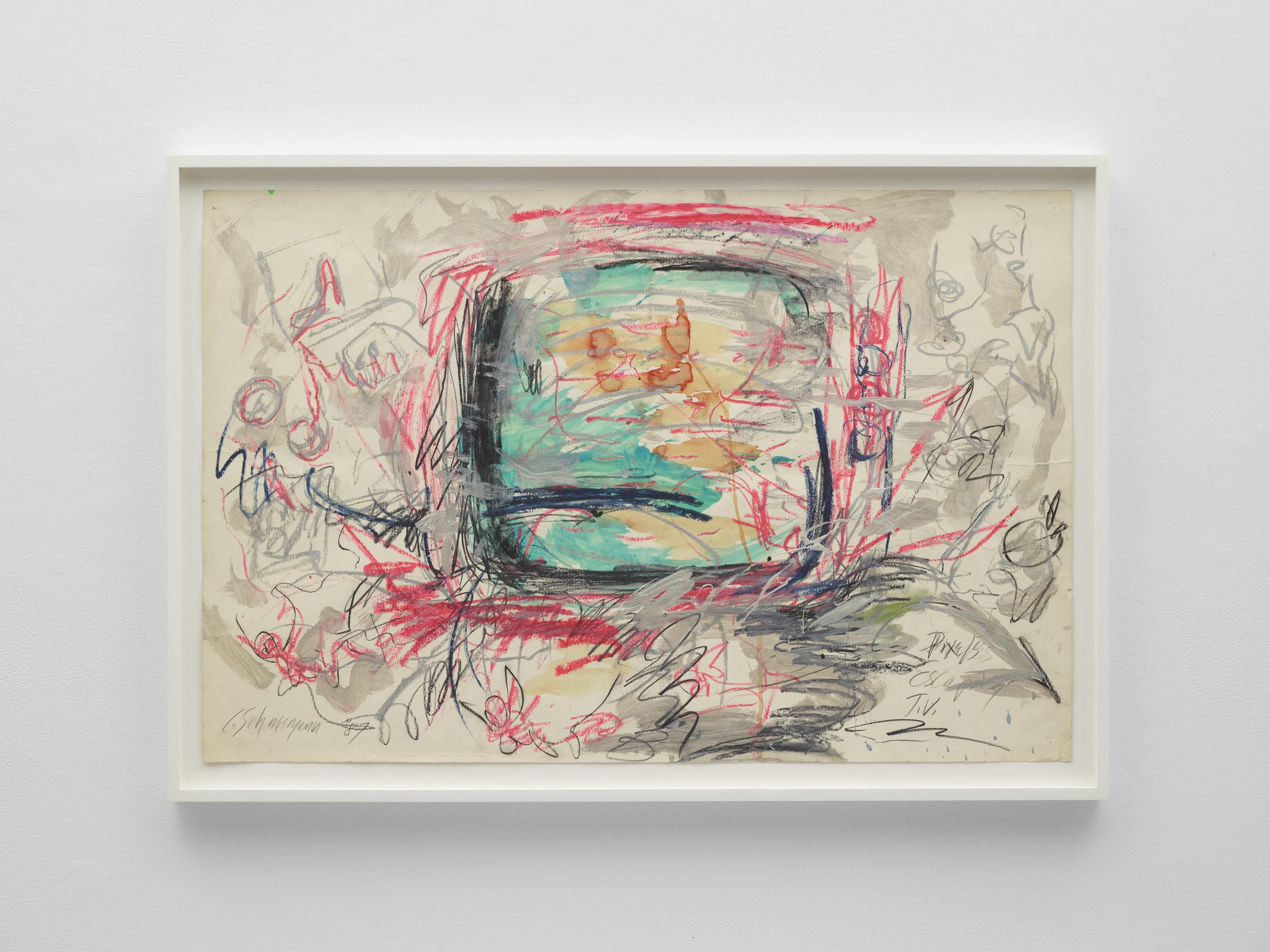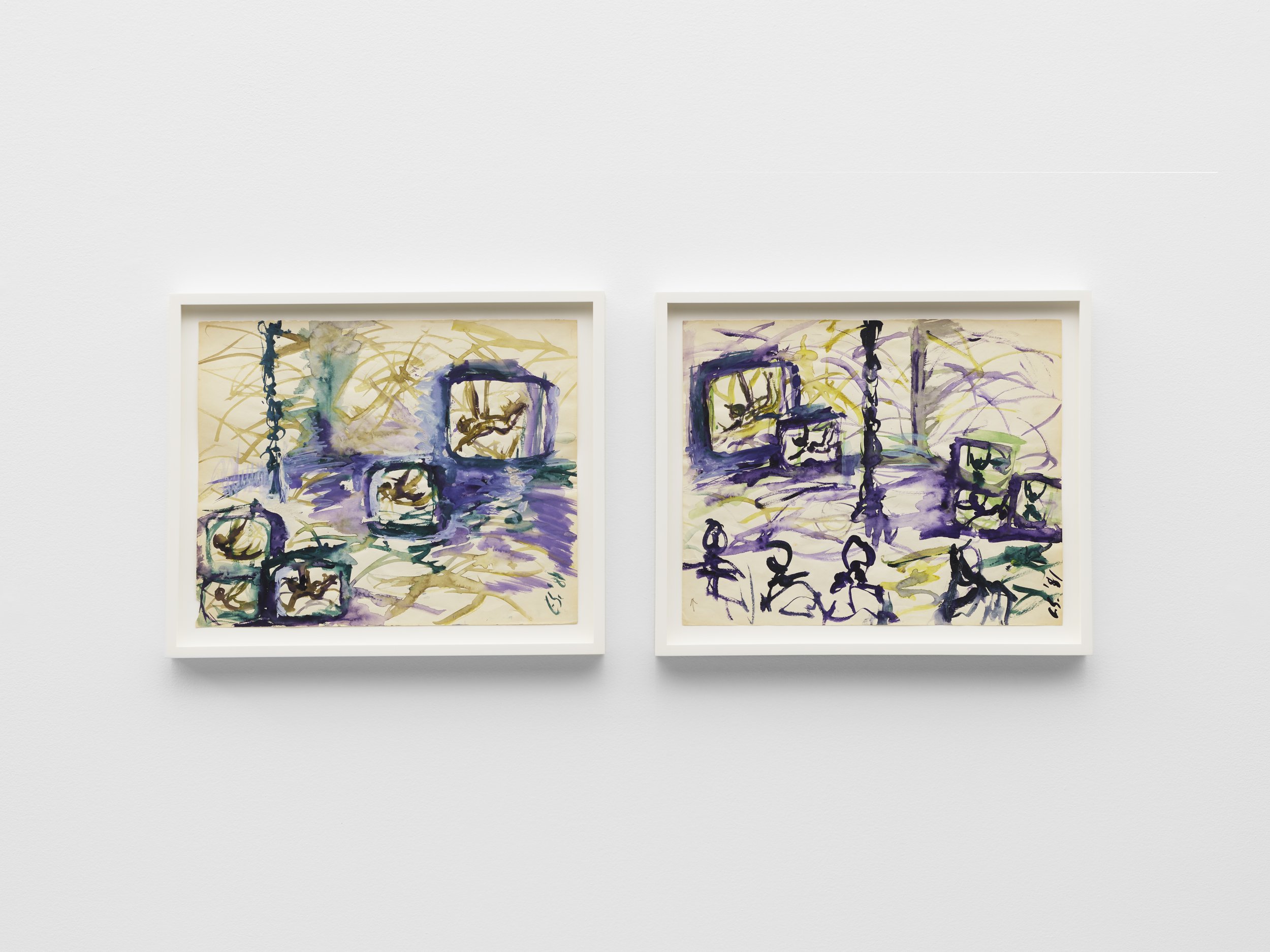Carolee Schneemann
Carolee Schneemann Souvenir of...Tyre...Sidon...Damour (for Bruce McP.), 1982 Diptych, acrylic paint, mylar, fabric, photographs, glass, collaged on board, aluminium frame 295.9 x 174.6 x 6.4 cm 116 1/2 x 68 3/4 x 2 1/2 in © Carolee Schneemann Foundation, Courtesy Lisson Gallery
Lisson Gallery is pleased to announce its first exhibition with Carolee Schneemann (1939–2019), one of the boldest and most influential artists of the twentieth and early twenty-first centuries, whose foundation has been represented by the gallery since October of last year. This inaugural show also marks the artist’s first solo exhibition in Los Angeles. Known for her groundbreaking and multidisciplinary practice, which spanned six decades, Schneemann challenged societal and artistic conventions by using her own body and diverse media to address issues of sexual expression, gender, politics, and war.
Carolee Schneemann Pixels Escaping T.V., 1987 Paint and crayon on paper 58.4 x 88.9 cm 23 x 35 in © Carolee Schneemann Foundation, Courtesy Lisson Gallery
The exhibition focuses on Schneemann’s work two decades into her career, centering on a unique multimedia installation engendered by a dream she had while visiting Los Angeles in the summer of 1985. In the dream, Schneemann envisioned round, rock-like shapes reminiscent of Monet’s Water Lillies, floating in the distance. The resulting piece, Video Rocks (1987), shown at Lisson for the first time in its entirety, consists of 180 discs, each roughly the size and shape of a cow dung pat, spread across the floor in a shallow mound. At the head of this mound, five video monitors have been arranged in a row. Each screen plays staggered filmed scenes that allude to the preceding sculptural landscape — footage of people and animals crossing the rocks. Building on the self-reflexive explorations of embodiment and personal narrative she had established in her early 8mm and 16mm films such as Fuses (1965), Plumb Line (1968–71) and Kitch’s Last Meal (1973–76), Video Rocks marks a pivotal moment in Schneemann’s practice. This immersive, multifaceted work was last exhibited in the United States nearly thirty years ago during her solo show Carolee Schneemann: Up to and Including Her Limits at the New Museum in New York.
Carolee Schneemann Untitled, 1981 Watercolor on paper Each: 35.6 x 43.2 cm Each: 14 x 17 in © Carolee Schneemann Foundation, Courtesy Lisson Gallery
Alongside this installation, the exhibition includes a series of drawings that Schneemann simultaneously created to document the imagery and possible configurations of Video Rocks—expressive sketches in paint, crayon, and marker that capture the artist’s sources and methods. A selection of these works, including a 31 ½-foot-wide painting of pink and yellow floral forms that hangs horizontally on the adjacent wall—a reference to the water lilies in Schneemann’s dream—is also on display. Framing the entire assemblage in the gallery are five acrylic light rods suspended from the ceiling, illuminating the rocks below and adding another layer of lyricism to this ‘dream/vision’ space, as the artist described it.
Carolee Schneemann Video Rocks as Column, 1989 Watercolor, marker, and crayon on paper Un-Folded 106.7 x 129.5 cm Un-Folded 42 x 51 in © Carolee Schneemann Foundation, Courtesy Lisson Gallery
The exhibition also features works from Schneemann’s Lebanon Series (1981–1999), including Souvenir of...Tyre... Sidon...Damour (for Bruce McP.) (1982), a tactile collaged painting that blends and abstracts personal and political imagery to address the violence of the Lebanese Civil War and its aftermath. The Dust Paintings (1983–86), also part of the Lebanon Series, are abstract compositions that incorporate circuit boards, silkscreened images, nails, glass particles, ash, and other materials. These works reflect Schneemann’s long-standing engagement with political atrocities, such as her protest film Viet-Flakes (1965), connecting to her early experiments with painting and collage in the 1950s and 1960s. The Dust Paintings reinforce her deep material exploration, with rag paper surfaces layered with paint, string, vegetable dye, and glass.
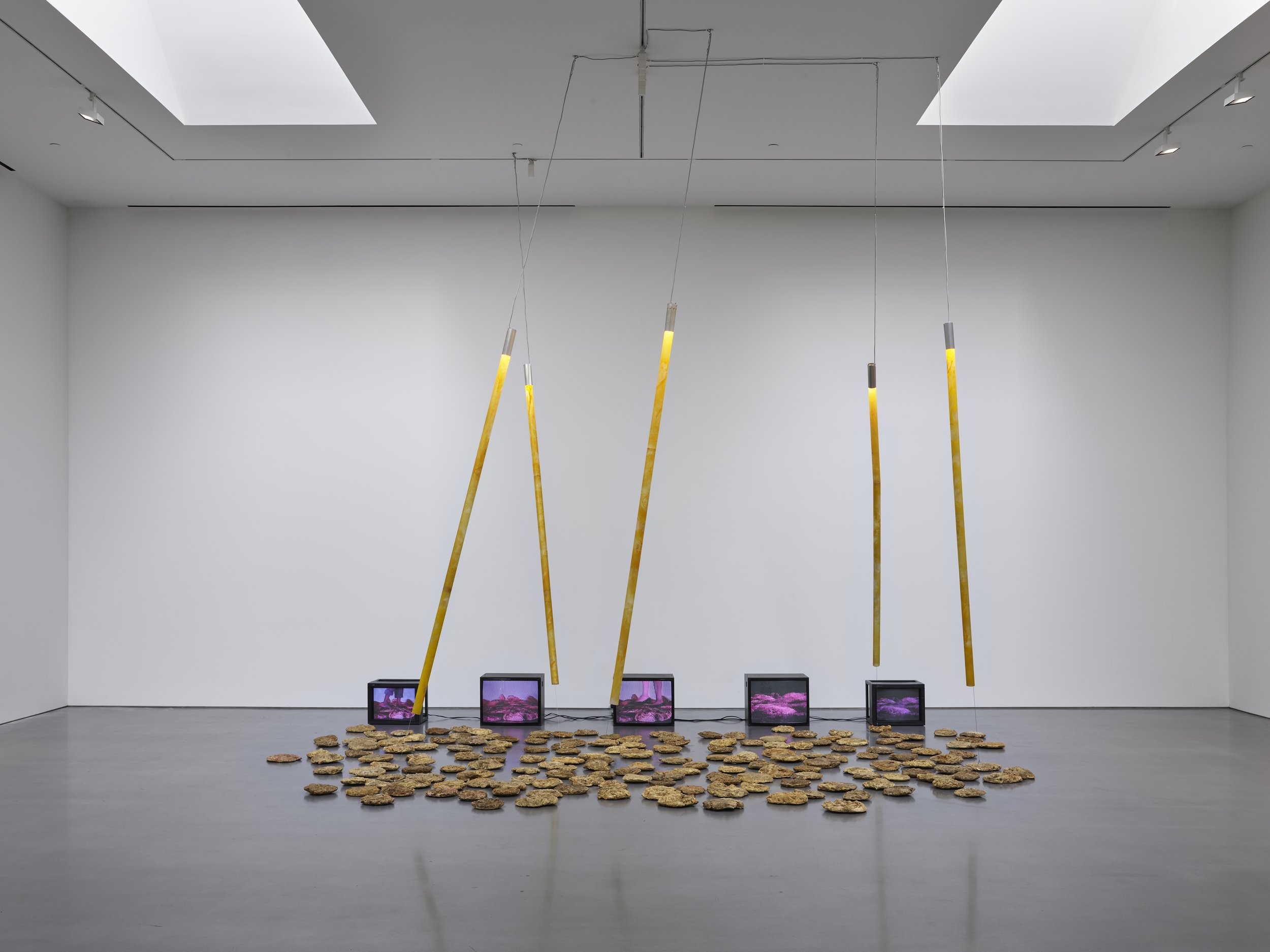
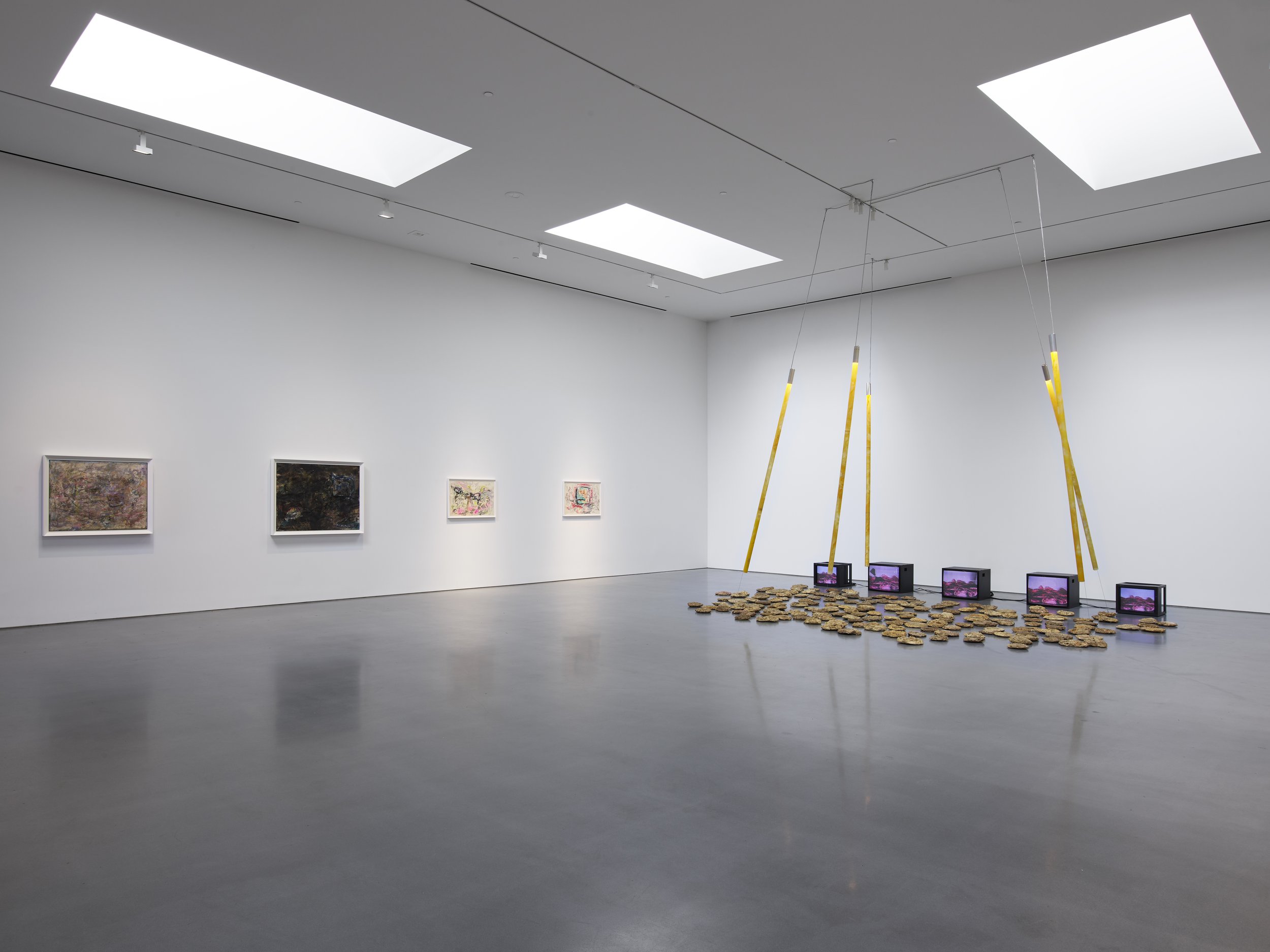
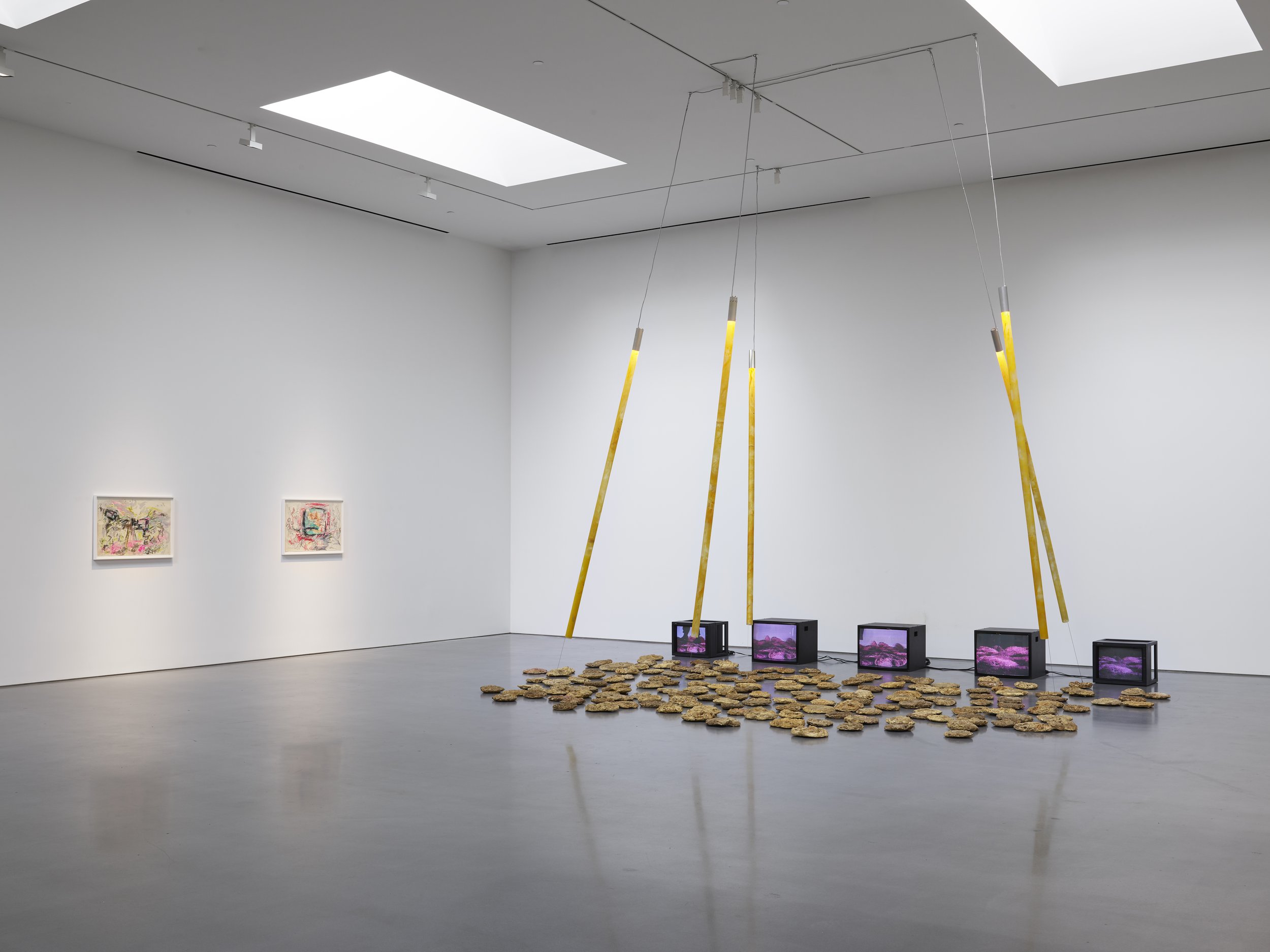
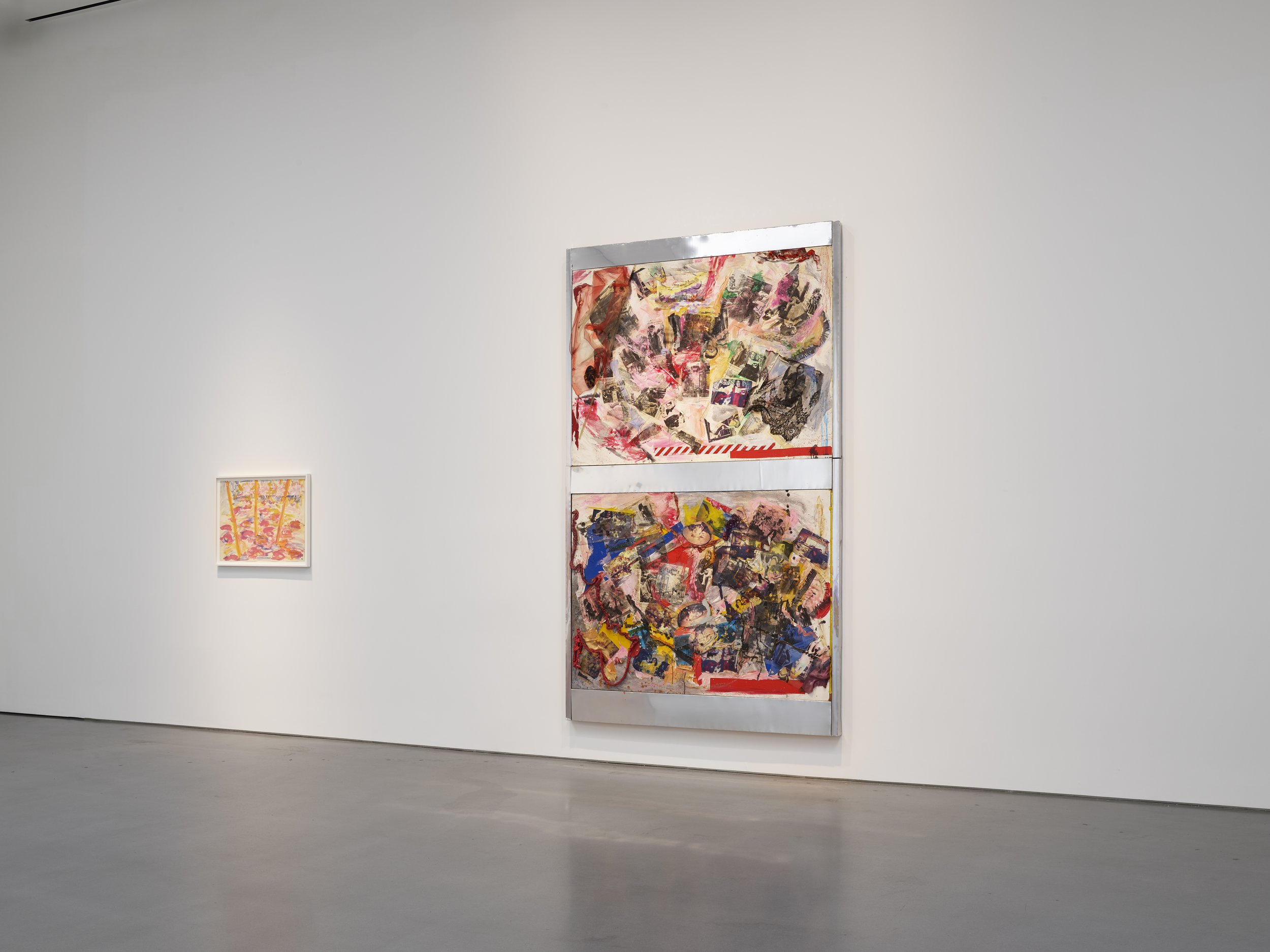
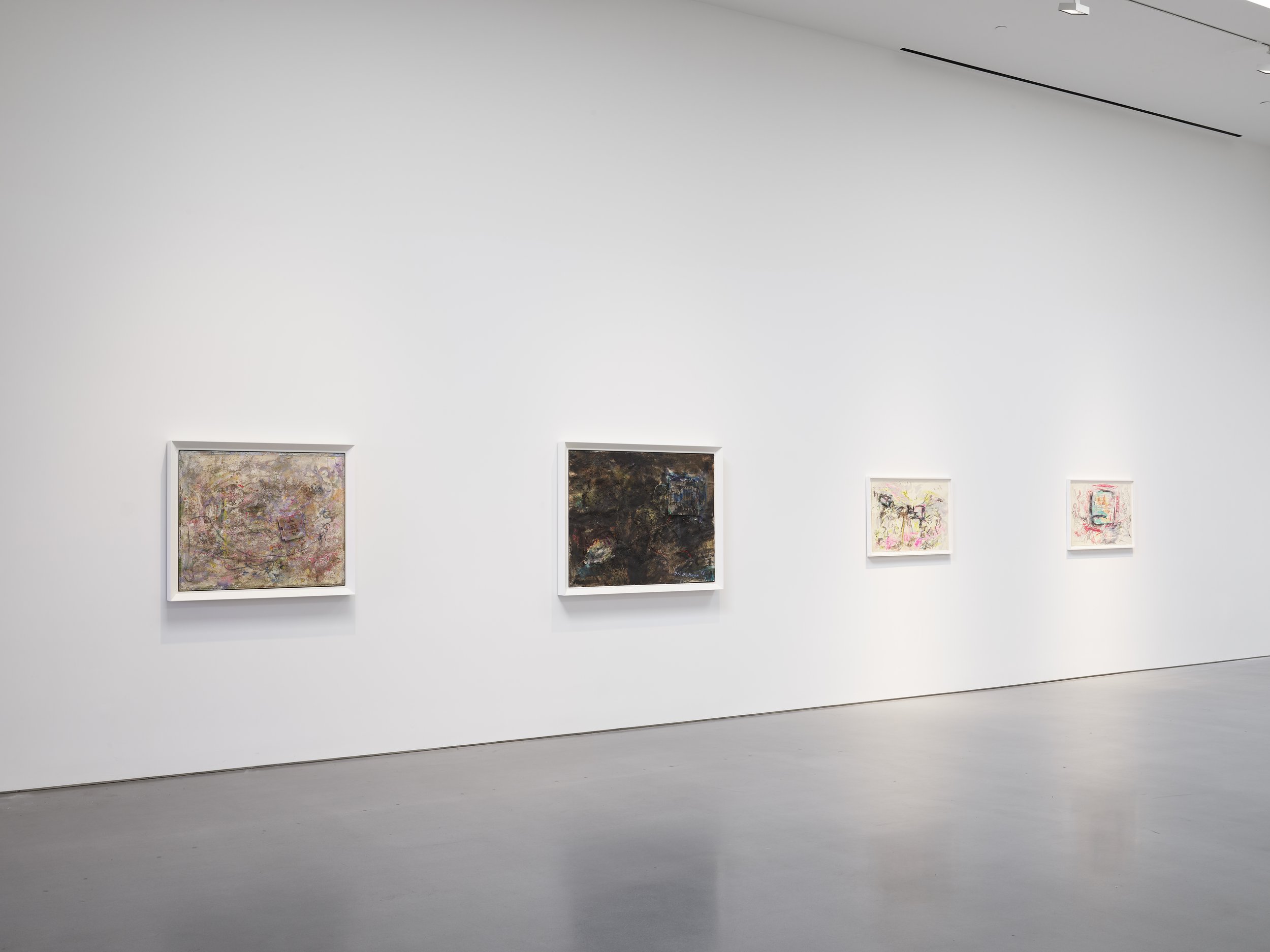
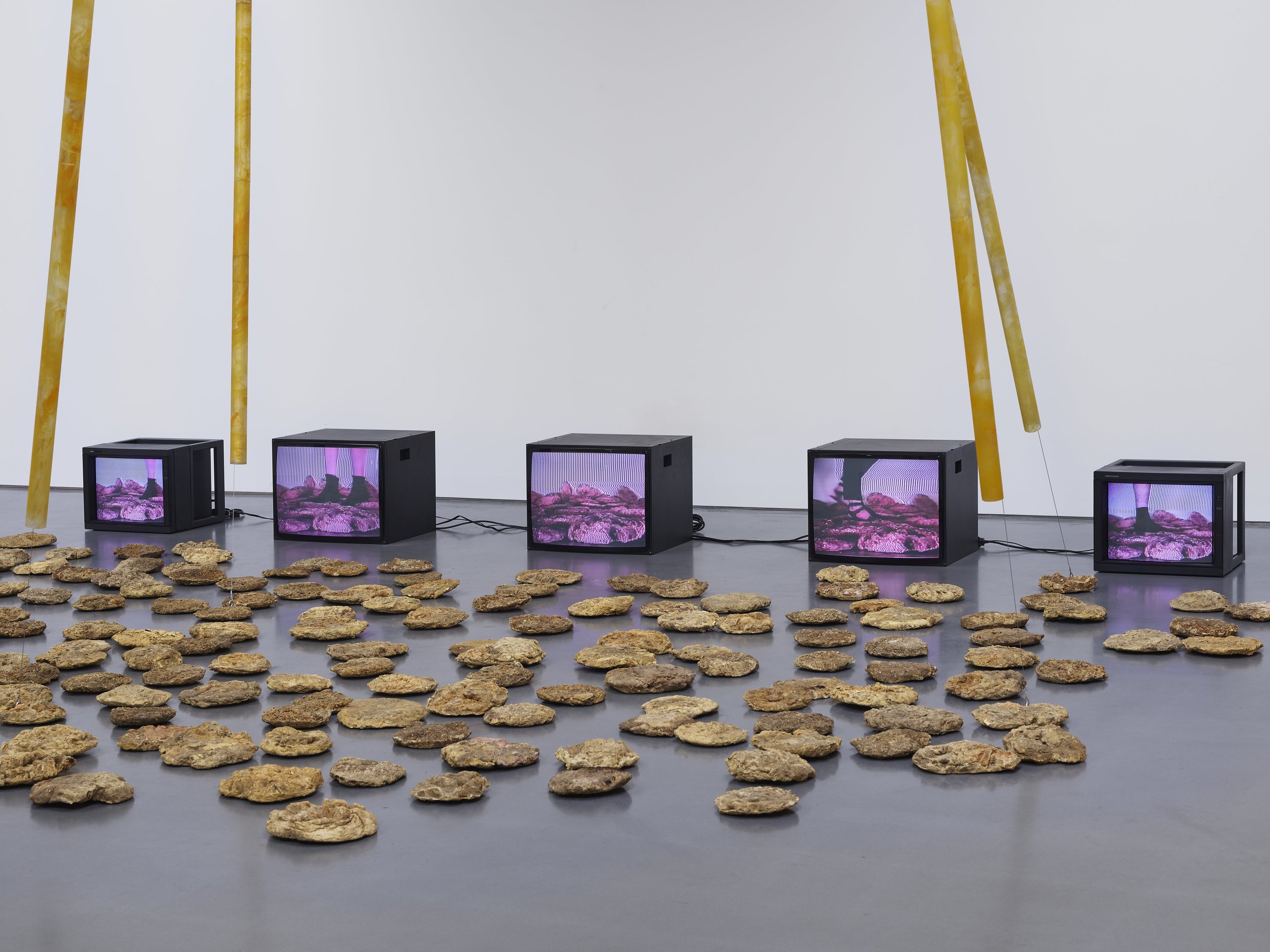
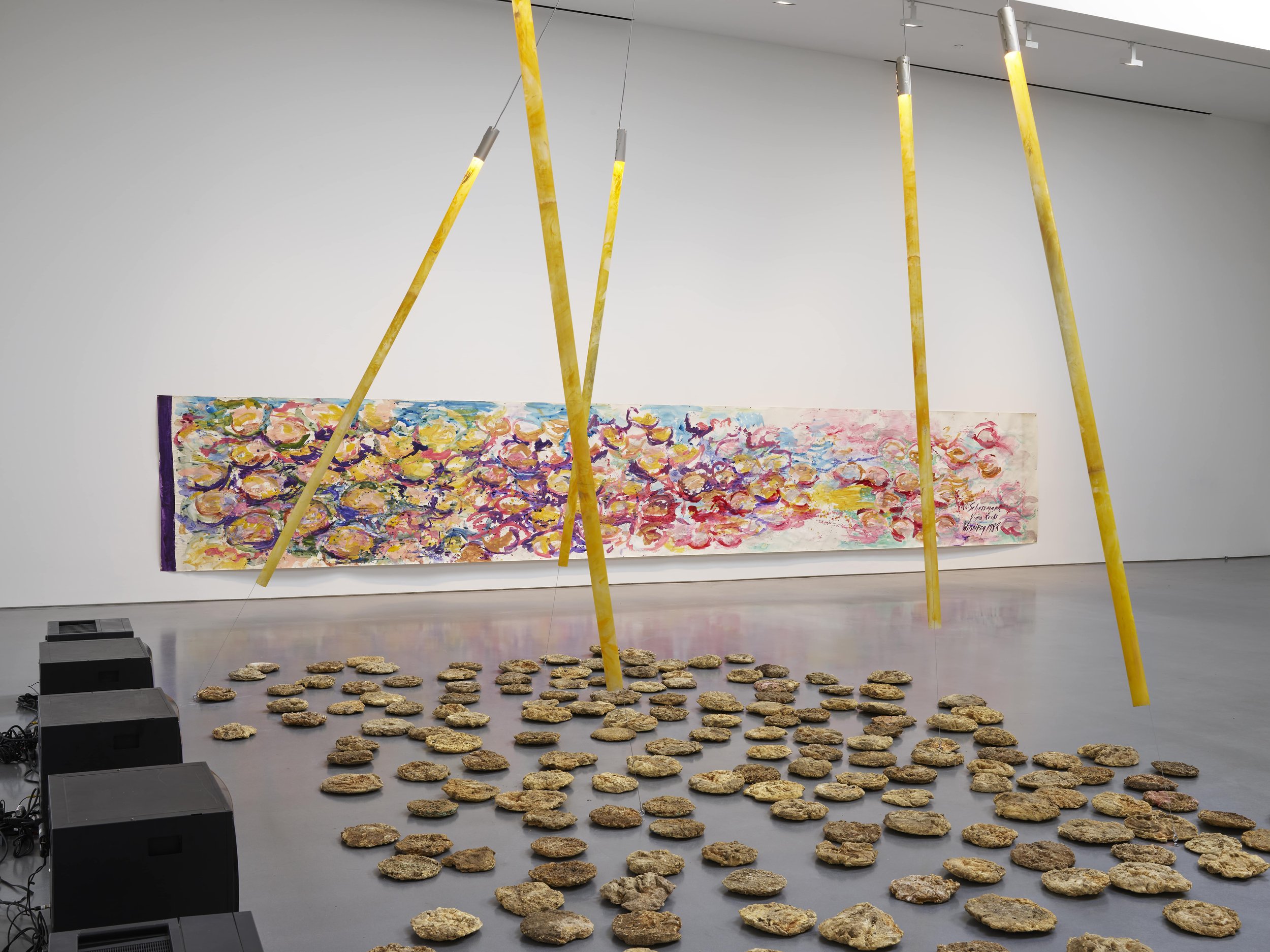
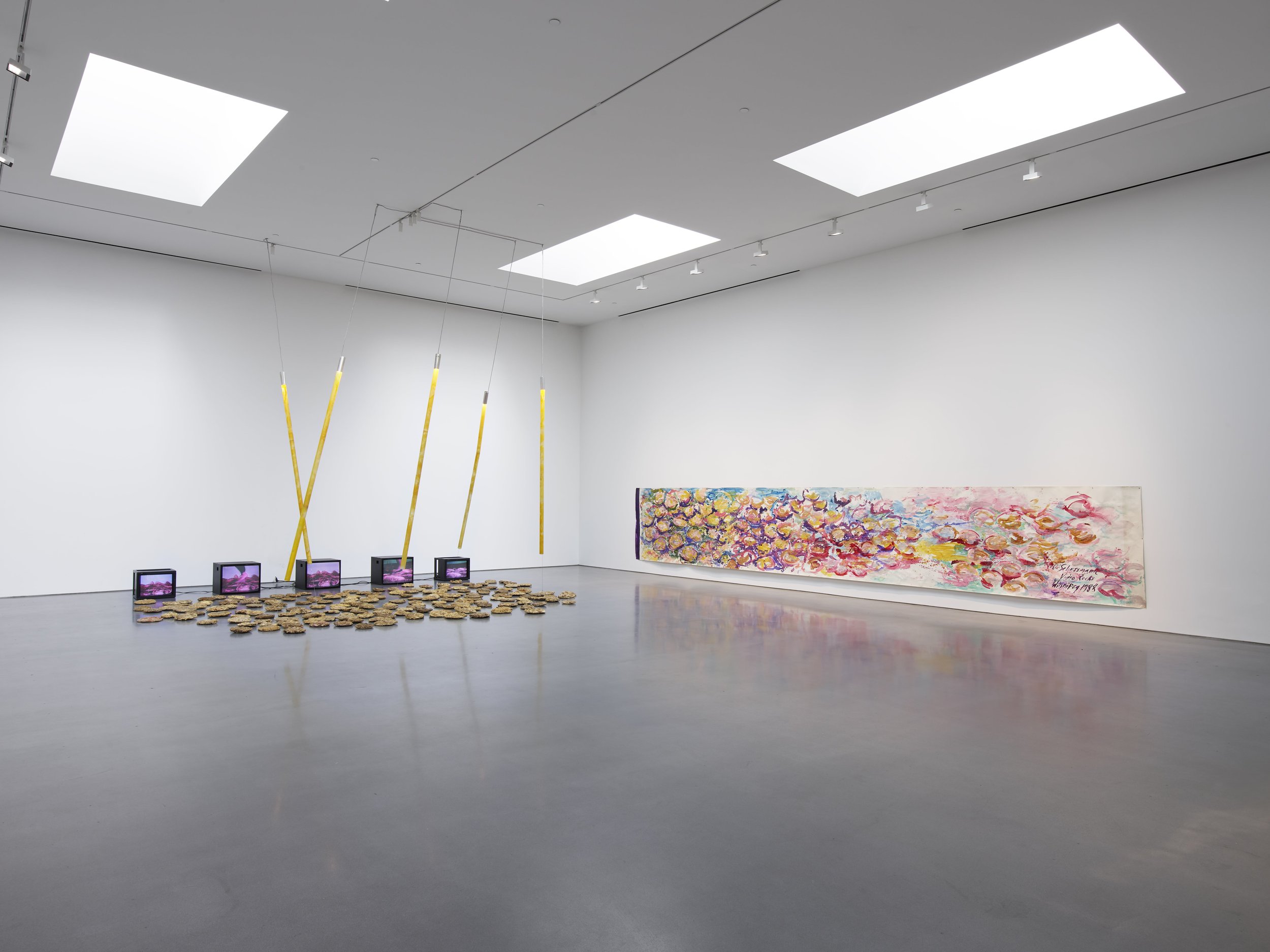
Exhibition view of ‘Carolee Schneemann’ at Lisson, Gallery Los Angeles, 11 April – 24 May 2025 © Carolee Schneemann Foundation, Courtesy Lisson Gallery
If Video Rocks was Schneemann’s early attempt to merge her video works with sculpture, the Dust Paintings represent another instance of her desire to fuse and disrupt artistic mediums. Just as her early investigations aimed to break free from static, traditional forms, these later works reflect her continued efforts to create a dynamic and unfolding artistic oeuvre.
About the artist
Carolee Schneemann (1939–2019) employed various artistic media and objects to develop a rich and influential body of work concerning politics, narrative, sexuality and the representation of women in art and society. Emerging from experimental film, dance, poetry, Fluxus, Happenings and environments, the artist’s early painting, collage, assemblage and box constructions were partly an effort to free artistic practice from the static object. Incorporating her nude body into performances extended that investigation into the liberation of the female image. Known for her legendary, visceral and taboo performances, including Meat Joy (1964), Up to and Including Her Limits (1973–76), and Interior Scroll (1975), Schneemann paved the way for generations of feminist artists. She documented her performances using film, created kinetic painting-sculptures and video art on such diverse topics as gender, eroticism, desire, disasters and war.
Schneemann received her BA from Bard College, Annandale-On-Hudson, NY and an MFA from the University of Illinois, Urbana, IL. Recent selected solo exhibitions include body-house: Dialogues between Carolee Schneemann, Diego Bianchi and Márcia Falcão, Pivô, São Paulo, Brazil (2024); Carolee Schneemann: Body Politics, Barbican Art Gallery, London, UK (2022); After Carolee: Tender and Fierce/Carolee’s Room, Artpace, San Antonio, TX, USA (2021); Paint Like I Move (Precarious), les Abattoirs, Toulouse, France (2017); and Kinetic Painting, Museum der Moderne Salzburg, Austria (2015); Museum für Moderne Kunst, Frankfurt, Germany (2017); MoMA P.S.1 (2017). In 2017, she was awarded the Golden Lion for Lifetime Achievement at the 57th International Art Exhibition of La Biennale di Venezia, Venice, Italy.
About Lisson Gallery
Lisson Gallery is one of the most influential and longest-running international contemporary art galleries in the world. Today the gallery supports and promotes the work of more than 60 international artists across spaces in London, New York, Los Angeles, Shanghai and Beijing. Established in1967 by Nicholas Logsdail, Lisson Gallery pioneered the early careers of important Minimal and Conceptual artists, such as Art & Language, Carl Andre, Daniel Buren, Donald Judd, John Latham, Sol LeWitt, Richard Long and Robert Ryman among many others. It still works with many of these artists as well as others of that generation from Carmen Herrera to the renowned estate of Leon Polk Smith. In its second decade the gallery introduced significant British sculptors to the public for the first time, including Tony Cragg, Richard Deacon, Anish Kapoor, Shirazeh Houshiary and Julian Opie. Since 2000, the gallery has gone on to represent many more leading international artists such as Marina Abramović, Ai Weiwei, John Akomfrah, Susan Hiller, Tatsuo Miyajima and Sean Scully. It is also responsible for raising the international profile of a younger generation of artists led by Cory Arcangel, Ryan Gander, Van Hanos, Hugh Hayden, Haroon Mirza, Laure Prouvost, Pedro Reyes, Wael Shawky and Cheyney Thompson.
The exhibition opened on April 11th and will run through to the 24th of May at the Los Angeles location. For more information about this exhibition and others, please visit the Lisson Gallery here. The gallery can also be found on Facebook, YouTube, and Instagram.
